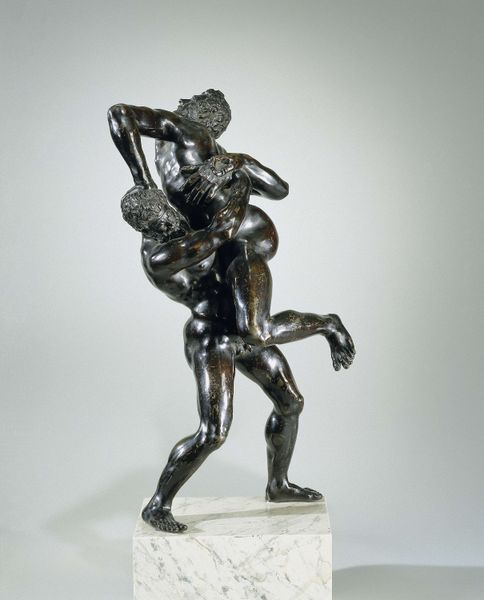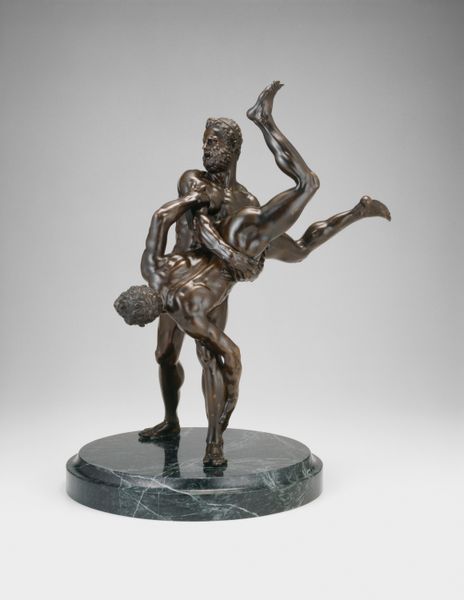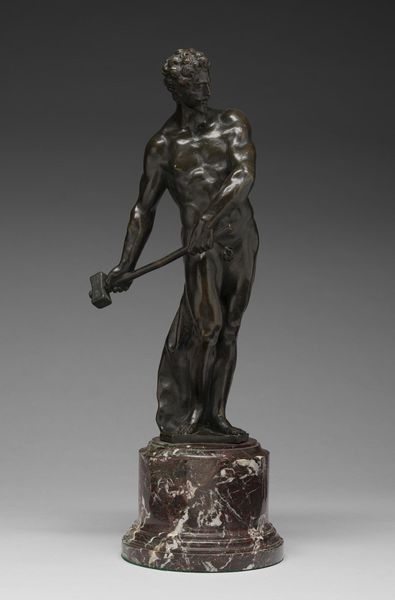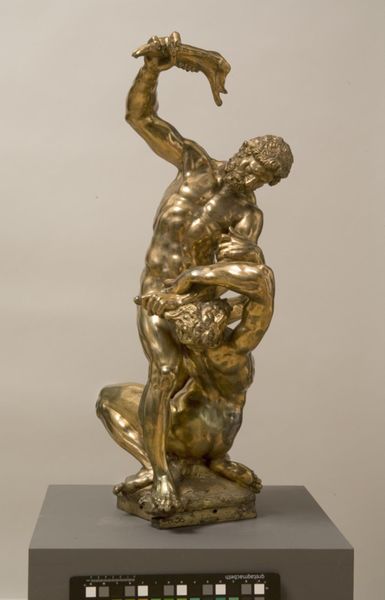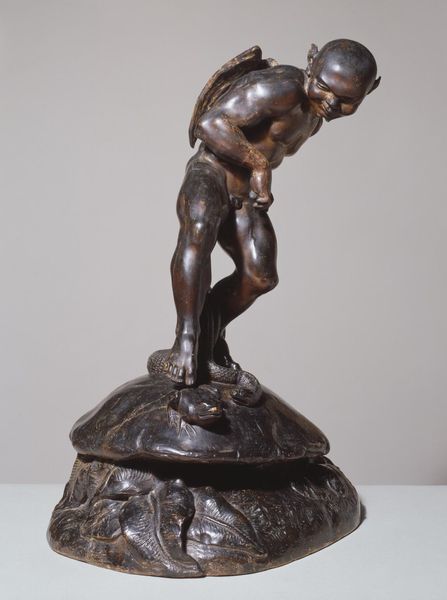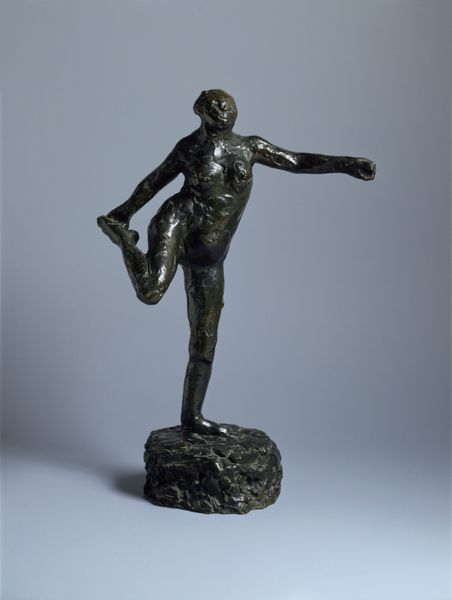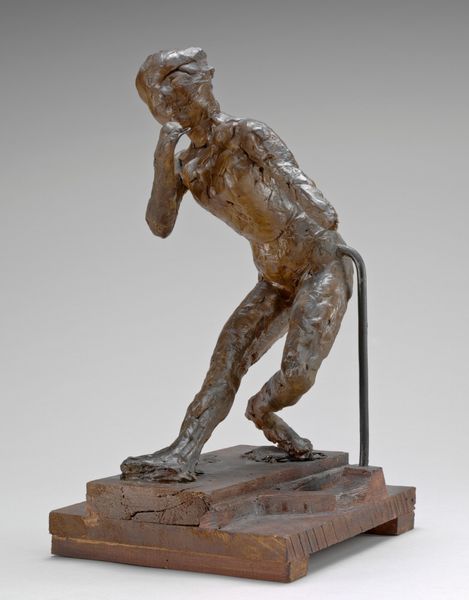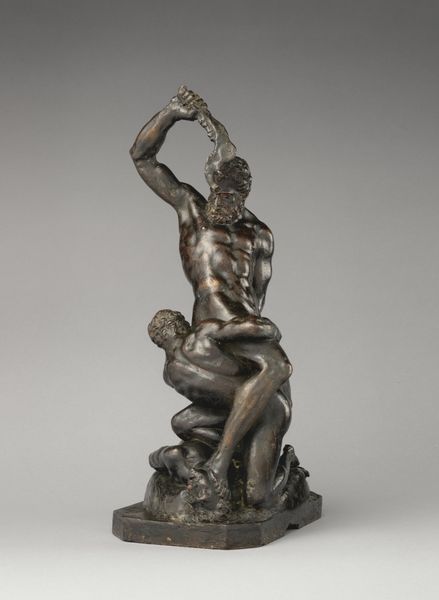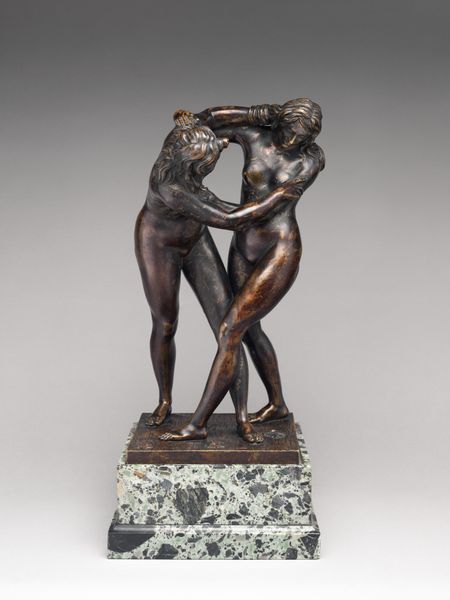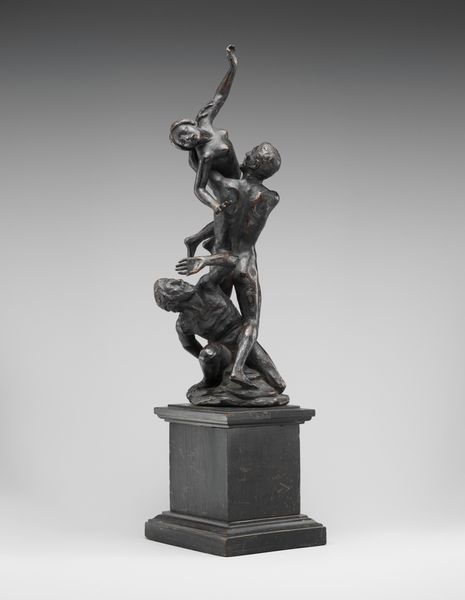
bronze, sculpture
#
baroque
#
sculpture
#
bronze
#
figuration
#
sculpting
#
sculpture
#
men
#
genre-painting
#
decorative-art
Dimensions: Overall (confirmed): 16 1/4 × 8 3/8 × 8 1/2 in. (41.3 × 21.3 × 21.6 cm)
Copyright: Public Domain
Curator: Look at this dynamic sculpture, “Two Men Wrestling,” thought to have been crafted between 1675 and 1800, attributed to Ferdinando Tacca. Editor: Wow, it’s striking! The bronze seems almost alive, capturing such intense energy. I'm immediately drawn to the craftsmanship – you can almost feel the strain in their muscles. Curator: Precisely. Tacca's skill is evident in the medium he employs, a dark, gleaming bronze that showcases a deep understanding of musculature and form, inviting the viewer to appreciate the process involved in its creation. The Baroque aesthetic emphasized drama. We see it here through dynamic, tortuous figuration. Editor: It raises the question, what was the social purpose of such a sculpture at that time? Who would have commissioned such a physically charged piece and why? Curator: Given that this piece now resides at the Metropolitan Museum of Art, and looking at similar bronzes in other major collections, these objects acted as trophies of status and education, referencing classical antiquity. But thinking about production, the intense heat required for casting alone… this object involved significant specialized labor. Editor: Yes, considering its potential display within the household of a wealthy patron gives us insight into the power structures of that time. Perhaps a celebration of physical prowess mirroring social dominance. This object speaks of a society invested in appearances and displays of strength. Curator: I agree. And let’s think about the physical labor: how many artisans would have touched this bronze? The mining, the smelting, the modelling… each a cog in the social machine that led to its creation. Editor: Thinking about it that way deepens my appreciation. I find myself less focused on the aesthetics and more intrigued by how such sculptures reflect and reinforce prevailing ideologies. Curator: Absolutely, from an aesthetic exercise to a reflection on consumption and labor, and the systems that produce works of art like this one. Editor: A brutal image reflecting brutal social forces; food for thought indeed.
Comments
No comments
Be the first to comment and join the conversation on the ultimate creative platform.

